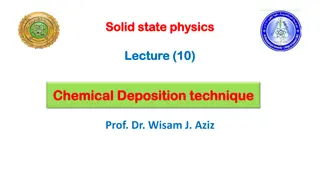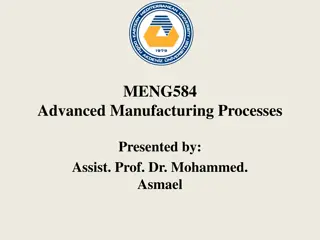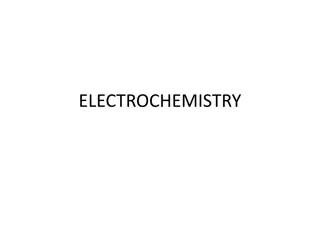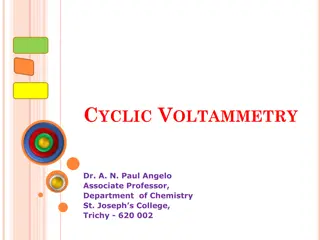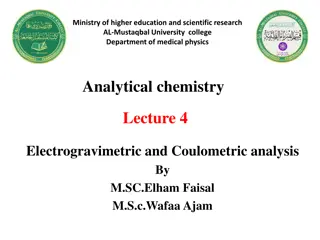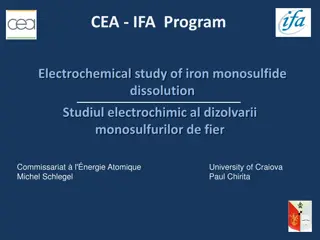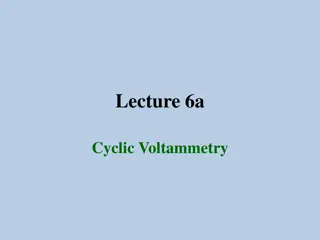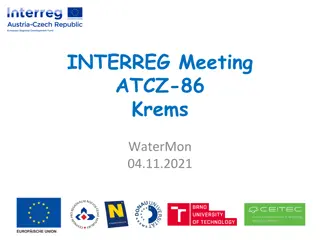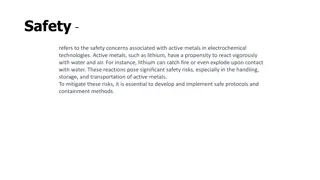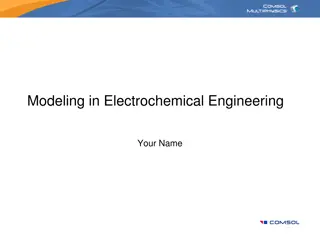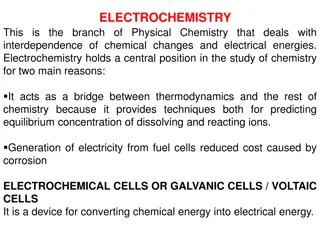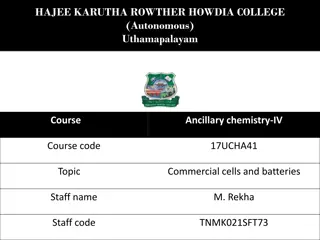Understanding Polarography in Electrochemical Analysis
Explore the realm of polarography, a type of voltammetry utilizing the dropping mercury electrode (DME) and mercury pool. Learn about classical polarographs, the Ilkovic equation, advantages and disadvantages of mercury drop electrodes, and how to minimize polarographic maxima in electrochemical analysis.
Download Presentation

Please find below an Image/Link to download the presentation.
The content on the website is provided AS IS for your information and personal use only. It may not be sold, licensed, or shared on other websites without obtaining consent from the author. Download presentation by click this link. If you encounter any issues during the download, it is possible that the publisher has removed the file from their server.
E N D
Presentation Transcript
Electrochemical methods of analysis Bulk methods Interfacial methods Dynamic methods Static methods Conductimetry Controlled current controlled potential Potentiometry Controlled current coulometry Variable potential Fixed potential Controlled potential coulometry Amperometry Voltammetry Hydrodynamic voltammetry Polarography
Definition Polarography is a type of voltammetry in which the working microelectrode is the dropping mercury electrode (DME) and the counter electrode is a mercury pool. Convection effects can be minimized by using unstirred solutions during current measurements
Classical polarograph Variable resistor DME Reference electrode Nitrogen outlet Nitrogen inlet Analyte solution Mercury pool
Ilkovic equation Id= 607 nD1/2C m2/3t1/6 id= diffusion current, A n = number of electrons D = diffusion coefficient of analyte, cm2s-1 C = concentration of analyte, mM m = mass of mercury flowing through capillary tip, mg s-1 t = drop life, s
Advantages of mercury drop electrode High overpotential for the reduction of H3O+ Reproducible dropping action Formation of an amalgam with several metals Electrode surface is continuously renewed. Easy calculation of surface area.
Disadvantages Mercury is easily oxidized. Low sensitivity (10-5M). Difficulties in its use Mercury toxicity.
Polarographic maxima Polarographic maximum
Minimization of polarographic maxima The maximum may be reduced or completely removed by adding a maximum suppressor. This is usually a simple gelatinous material (for example Triton X-100 or gelatin) that greatly slows down the migration of analyte ions to the surface of the electrode. The accumulation of analyte ions is greatly reduced and the maximum in the polarogram is suppressed. Care must be taken to avoid adding excess of these maxima suppressor, because they can change the solution viscosity and reduce the magnitude of the diffusion current.
Origin of oxygen waves The first wave O2+ 2H++ 2 e- H2O2(in acidic medium) O2+ 2H2O + 2 e- 2H2O2(neutral/alkaline) The second wave H2O2+ 2H++ 2 e- 2H2O (in acidic medium) H2O2 + 2 e- 2OH-(in alkaline medium)
Removal of oxygen waves Physically by bubbling inert gas. Chemically by addition of hydrazine N2H4+ O2 N2+ 2H2O
APPLICATIONS OF POLAROGRAPHY Inorganic applications Most metal ions (reduced) Mixtures of electro-active ions may E1/2>= 0.4 Volt for singly charged ions 0.2 Volt for doubly charged ions Inorganic anions. Dissolved oxygen in solution. Oxidation states of a metal in solution.
APPLICATIONS OF POLAROGRAPHY Organic applications Most of the reducible organic substances (aldehyde, ketons, acids, nitro , etc. ) Easily oxidizable organic substances Notes: Careful selection of solvent pH should be controlled.
Selection of the solvent solvent :- must be able to dissolve a supporting electrolyte and the analyte, should not be reduced easily, and if necessary be buffered. Further, it must conduct electricity. The most popular being water. To dissolve organic compounds in water, a second solvent, such as ethanol, acetone, acetonitrile, acetic acid or dioxane, may first be mixed with water.
pH control of the solution The pH of the solution should be control with a buffer. This is because of the reduction of organic substances usually involves the reduction of a hydrogen on the molecule. In this case, the buffer serves as the supporting electrolyte. The usual choice for the analysis of simple organic pharmaceuticals would be an aqueous alcoholic (e.g. 80% buffer-20% methanol) solution containing a simple salt as supporting electrolyte (e.g. at least 0.01 M potassium chloride) Simple buffer solutions are effective over narrow pH ranges, but mixed buffer systems, e.g. Britton-Robinson buffer, are more versatile when the polarographic behaviour of an organic species is be fully investigated.
Careful choice of buffer Care must be taken to ensure that no ions in the electrolyte interact with the analyte pH changes do not affect its stability, and that the use of aqueous/alcoholic solvents does not cause changes in the E1/2 of the electroactive species, the limiting current values, or the reduction mechanism involved, which might lead to errors in the analysis.
Some functional groups reducible in polarography. Imines Alkynes Diazocompound. Nitroso compound. Halides Thiocyanates Nitro compounds Dizunium salts Dienes`` Nittiles Aldehydes Oxime Ketones Sulphones Heterocycles Sulphonium salts Organometalics Aromatic carboxylic acids - The products of polarographic reduction may not be the same as if the reduction were attempted chemically, - The reason is that the electrode kinetics limit the progress of multi-stage reactions.
Nitrofurans and nitroimidazoles Nitrofurantoin, Metronidazole and Tinidazole
Benzodiazepines determination solvent for reduction of Nitrazepam in 20% methanol-0.1M hydrochloric acid, This gives peaks at -0.11 V and - 0.67 V vs silver-silver chloride.
Atropine determination It isexample for the use of chemical derivatisation in polarography he analysis of atropine by d.c. polarography may be quoted, in 0.1 M tetrabutyl ammonium perchlorate in acetonitrile can be used as solvent. Nitration of atropine can be effected by reaction at room temperature with 10% potassium nitrate in concentrated sulphuric acid, and a sensitivity of 200 ng atropine ml-L of 1 M sodium hydroxide supporting electrolyte with dpp




